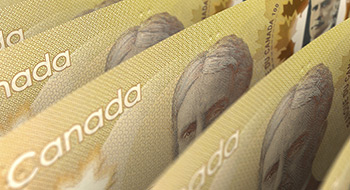

Shortly after the federal government announced it would increase the annual contribution limit for tax-free savings accounts (TFSAs) to $10,000, Liberal leader Justin Trudeau and NDP leader Thomas Mulcair both said they’d reverse the decision if elected this fall. Why? The increase will only benefit the rich, they argue.
A Broadbent Institute report released in June appears to back up that claim. It finds only 38% of those eligible to open a TFSA (Canadians residents over age 18) had actually done so in 2013, when the contribution limit was $5,500. And just 6.7% of those eligible made the maximum contributions.
Among those eligible to contribute who were earning less than $60,000 annually, a mere 5% maxed out their TFSA. For those making $250,000 or more, the maximization rate was 31%. So why aren’t most Canadians taking advantage of the TFSA?
They Just Don’t Get It
Many Canadians are financially illiterate. They also have many other savings vehicles to choose from, such as RRSPs, registered education savings plans, stock ownership plans, workplace pensions and non-registered plans. RRSPs tend to be top of mind for Canadians—but only during the first two months of the year, when they’re besieged by commercials and bank messages.
Even though it’s been more than six years since TFSAs were introduced, Canadians still don’t know a lot about them. A Tangerine poll finds more than a quarter (28%) of Canadians aren’t sure how these accounts work. Of those with a TFSA, 31% aren’t aware contribution room can be carried over from previous years, and the same percentage don’t know they can make contributions when they want.
Plus, a CIBC survey suggests Canadians still think of them as a place to park their cash. Few respondents realize they can invest in stocks (22%), bonds (23%) and mutual funds (29%) within a TFSA.
The TFSA participation rate among those eligible rose to 38% in 2013 from 18.1% in 2009 (the year TFSAs were first introduced), notes the Broadbent Institute report. But it should be even higher.
Don’t Piss Off the Over-50s
In an article on BenefitsCanada.com, Towers Watson senior consultant Karen Tarbox talks about ways employers can be creative with TFSAs. For example, they can direct incentive compensation or after-tax bonuses to individual TFSAs.
Financial advisors can play a role in making their clients understand the TFSA’s benefits. A 2011 Investment Funds Institute of Canada report finds 45% of Canadians who receive financial advice had a TFSA, versus 20% of those without an advisor.
Canadians can use TFSAs to save for a house or post-secondary education instead of making RRSP withdrawals, allowing their retirement savings to compound. And TFSAs allow seniors to maximize their retirement savings—especially those with low income levels ($22,608 or less for a couple) who qualify for the guaranteed income supplement, or those lucky enough to be subject to old age security clawbacks (the minimum income recovery threshold is $72,809 for 2015).
CARP, which represents aging Canadians, favours a higher TFSA limit. In a February poll, two-thirds of its members said they support a contribution limit increase. Retirees also like TFSAs, since most aren’t allowed to make RRSP contributions.
The government shouldn’t reduce the new TFSA contribution limits so soon after implementing them. Who wants to piss off the over-50 crowd? After all, they make up a large percentage of the population— and they’re more likely to vote.
Craig Sebastiano is associate editor of BenefitsCanada.com.
Get a PDF of this article.
